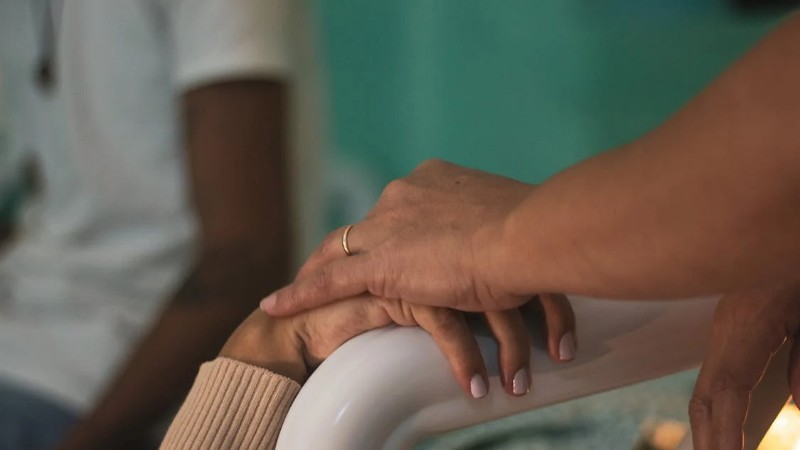Congress has extended pandemic-era telehealth flexibilities through March 31, 2025, providing continued support for hospices and healthcare providers. While this extension preserves access to virtual care, uncertainty remains about what will happen beyond this deadline. If these waivers are not further extended or made permanent, patients who rely on telehealth for essential services may face challenges in accessing care.
Key Takeaways
The U.S. Congress has extended the telehealth flexibilities put in place during the pandemic through March 2025, supporting hospices and healthcare providers while leaving some questions about future regulations.
- The Drug Enforcement Administration (DEA) and the Department of Health and Human Services (HHS) have extended telehealth provisions that allow prescriptions for controlled medications until the end of 2025.
- Research indicates that telehealth in palliative care is just as effective as in-person visits, improving patient quality of life and increasing caregiver satisfaction.
- Leading industry figures are urging Congress to continue telehealth flexibilities beyond March 31, 2025 to ensure uninterrupted patient care.
Key regulatory adjustments and their implications
The DEA and HHS have extended specific telehealth provisions that allow prescriptions for controlled medications through the end of 2025. However, other regulatory exemptions are still set to expire sooner, which could affect patients who depend on telehealth for essential services.
These regulatory changes are particularly relevant to hospice and palliative care, as they impact how providers deliver necessary treatments. Without these exemptions, access to certain medications and virtual consultations may become more limited, adding complexity for both patients and healthcare professionals.
Madison Summers, representing the National Alliance for Care at Home, has emphasized the importance of making DEA rules permanent and maintaining telehealth options for face-to-face (F2F) recertifications. Without clear guidelines, healthcare providers could face operational challenges that may affect the continuity of care.
The role of telehealth in hospice and palliative care
Research published in JAMA Network indicates that telehealth in palliative care is as effective as in-person visits, contributing to improved patient quality of life and caregiver satisfaction without compromising clinical outcomes. Telehealth remains particularly valuable for patients in rural and underserved areas, as it reduces the need for long travel times and facilitates timely medical attention. If telehealth flexibilities are not maintained, these gaps in care access may persist.
While telepalliative care has demonstrated positive outcomes, some challenges remain. Ensuring a reliable technological infrastructure is essential for effective virtual consultations. Additionally, healthcare providers require adequate training to integrate telehealth solutions seamlessly into their practice.
Another key consideration is the role of telehealth in patient engagement. Experts emphasize that virtual care should enhance, rather than limit, patient involvement in treatment decisions. Addressing these factors will be crucial to maximizing telehealth’s effectiveness in hospice and palliative care.
Industry concerns and calls for policy reform
Hospice providers have expressed concern that the expiration of telehealth flexibilities could disrupt patient care. Many stakeholders are urging Congress to allow continued in-person recertifications via telehealth and to implement permanent exceptions that would prevent service interruptions.
Dr. Michael Fratkin, a leader in palliative care, has noted that while technology is advancing rapidly, regulations may take longer to adapt. As a result, healthcare providers may encounter bureaucratic hurdles that could complicate care delivery. He has highlighted the need for policies that keep pace with technological innovation.
Future of telehealth in hospice care
Telehealth has played a critical role in expanding access to caregiver support, optimizing healthcare costs, and improving patient well-being. An analysis of billing data suggests that virtual care has facilitated greater caregiver involvement while offering cost efficiencies. However, regulatory oversight remains necessary to ensure patient safety and adhere to virtual consultations’ ethical standards.
Joseph Greer, a psychologist at Massachusetts General Hospital, has pointed out that while telehealth presents clear advantages, it must be supported by well-defined regulations to ensure both accessibility and high standards of medical practice.
We measure outcomes from the caregiver perspective … their quality of life and we did measure their coping and distress
Joseph Greer
As the March 31, 2025, deadline approaches, industry leaders continue to advocate for long-term regulatory stability. Without decisive action, the future of telehealth remains uncertain, raising concerns among patients, caregivers, and providers.
Ongoing efforts by Congress and regulatory bodies will be essential to ensuring that all patients—particularly those in rural and economically disadvantaged communities—maintain access to high-quality hospice and palliative care. The potential expiration of telehealth waivers highlights its crucial role in end-of-life care, reinforcing the need for a long-term policy framework.















